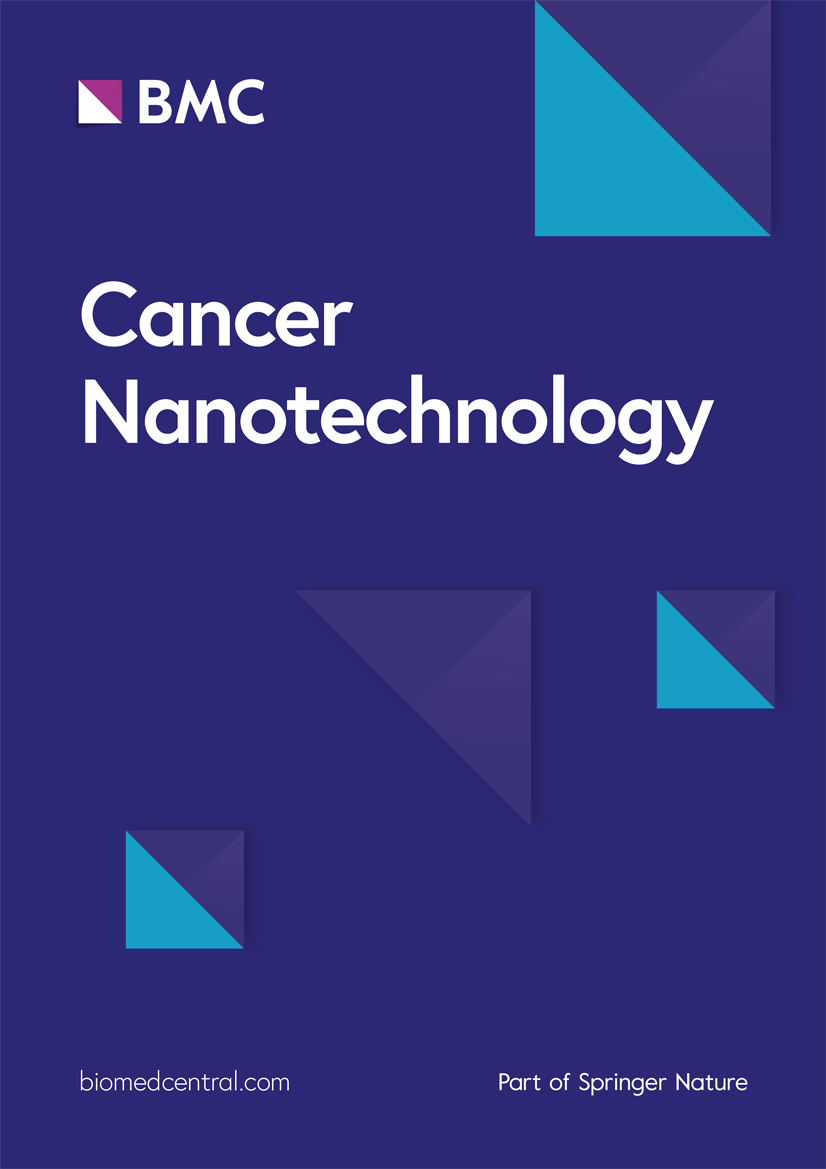Maximizing oxaliplatin's impact on EGFR + colorectal cancer through targeted extracellular vesicles
IF 4.8
2区 工程技术
Q2 NANOSCIENCE & NANOTECHNOLOGY
引用次数: 0
Abstract
To investigate the ability of extracellular vesicles (EVs) to deliver oxaliplatin to epidermal growth factor receptor (EGFR+) colorectal cancer cells and increase oxaliplatin’s cytotoxicity. Oxaliplatin was passively loaded into a stable cell line expressing cetuximab in membranes. EVs were collected and characterized for size, and their ability to target EGFR+ cells was tested. Cytotoxicity experiments were performed, and a xenograft cancer animal model was used to confirm the specific accumulation of oxaliplatin-loaded EVs with cetuximab-expressing membranes in EGFR+ cells. EVs with cetuximab-expressing membranes were successfully produced and used to encapsulate oxaliplatin, resulting in consistently sized oxaliplatin-loaded EVs with cetuximab-expressing membranes. The oxaliplatin-loaded EVs with cetuximab-expressing membranes were specifically accumulated by EGFR+ cells, leading to significant cytotoxic effects on these cells. In the animal model, the oxaliplatin-loaded EVs with cetuximab-expressing membranes accumulated specifically in EGFR+ cells and significantly enhanced oxaliplatin’s therapeutic efficacy against EGFR+ cancer cells. EVs with membrane-expressed bioactive molecules are a promising strategy for delivering therapeutic agents to EGFR+ colorectal cancer cells.通过靶向细胞外囊泡最大限度地发挥奥沙利铂对表皮生长因子受体(EGFR)+结直肠癌的作用
研究细胞外囊泡(EVs)向表皮生长因子受体(EGFR+)结直肠癌细胞递送奥沙利铂并增加奥沙利铂细胞毒性的能力。奥沙利铂被动载入膜表达西妥昔单抗的稳定细胞系。收集 EVs 并确定其大小,测试其靶向表皮生长因子受体(EGFR)+ 细胞的能力。进行了细胞毒性实验,并利用异种移植癌症动物模型证实了表达西妥昔单抗的膜的奥沙利铂负载EVs在表皮生长因子受体(EGFR)+细胞中的特异性蓄积。成功制备了表达西妥昔单抗的EVs,并将其用于包裹奥沙利铂,从而获得了大小一致的表达西妥昔单抗的奥沙利铂负载EVs。带有西妥昔单抗表达膜的奥沙利铂负载EVs可被表皮生长因子受体+细胞特异性蓄积,从而对这些细胞产生显著的细胞毒性作用。在动物模型中,带有西妥昔单抗表达膜的奥沙利铂负载型EVs在表皮生长因子受体(EGFR)+细胞中特异性蓄积,显著增强了奥沙利铂对表皮生长因子受体(EGFR)+癌细胞的疗效。带膜表达生物活性分子的EVs是向表皮生长因子受体(EGFR)+结直肠癌细胞递送治疗药物的一种有前途的策略。
本文章由计算机程序翻译,如有差异,请以英文原文为准。
求助全文
约1分钟内获得全文
求助全文
来源期刊

Cancer Nanotechnology
Pharmacology, Toxicology and Pharmaceutics-Pharmaceutical Science
CiteScore
5.20
自引率
1.80%
发文量
37
审稿时长
15 weeks
期刊介绍:
Aim:
Recognizing cancer as a group of diseases caused by nanostructural problems (i.e. with DNA) and also that there are unique benefits to approaches inherently involving nanoscale structures and processes to treat the disease, the journal Cancer Nanotechnology aims to disseminate cutting edge research; to promote emerging trends in the use of nanostructures and the induction of nanoscale processes for the prevention, diagnosis, treatment of cancer; and to cover related ancillary areas.
Scope:
Articles describing original research in the use of nanostructures and the induction of nanoscale processes for the prevention, diagnosis and treatment of cancer (open submission process). Review, editorial and tutorial articles picking up on subthemes of emerging importance where nanostructures and the induction of nanoscale processes are used for the prevention, diagnosis and treatment of cancer.
 求助内容:
求助内容: 应助结果提醒方式:
应助结果提醒方式:


